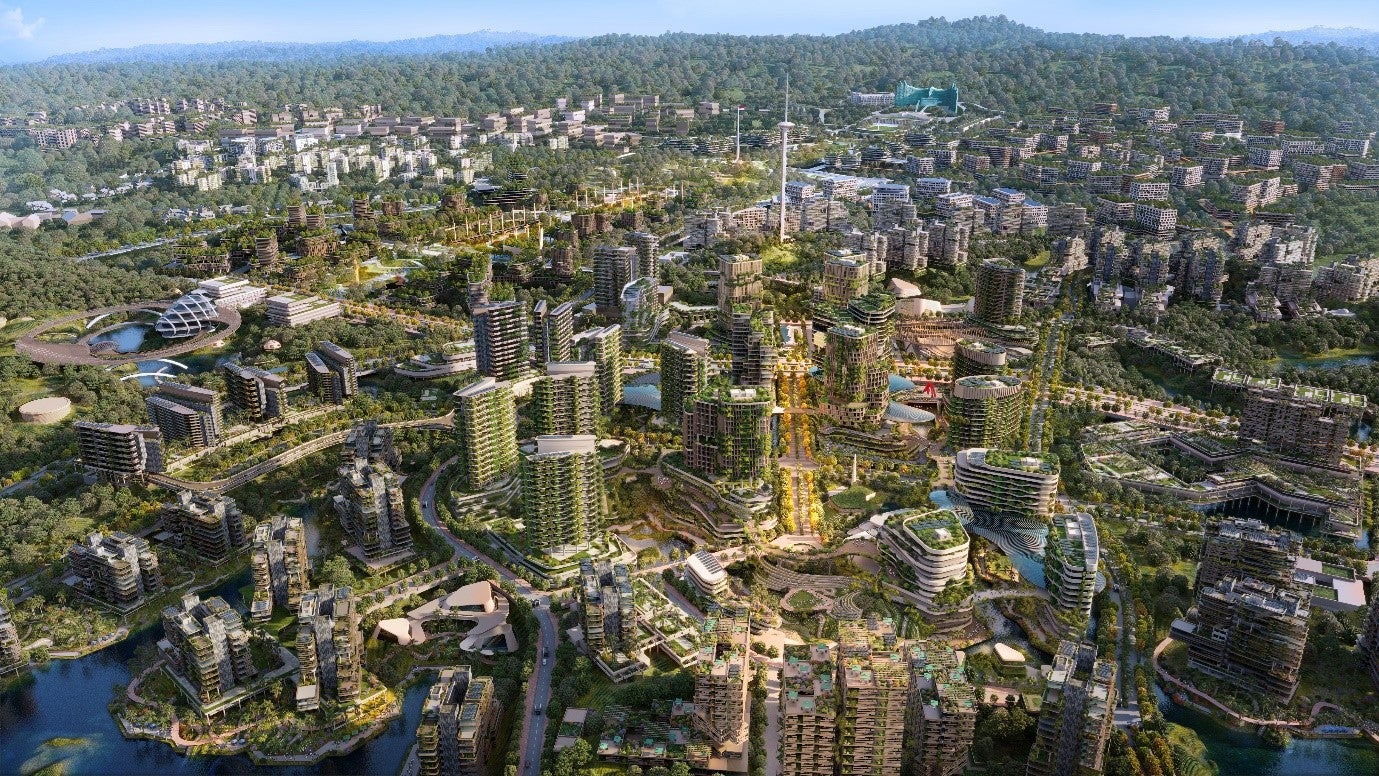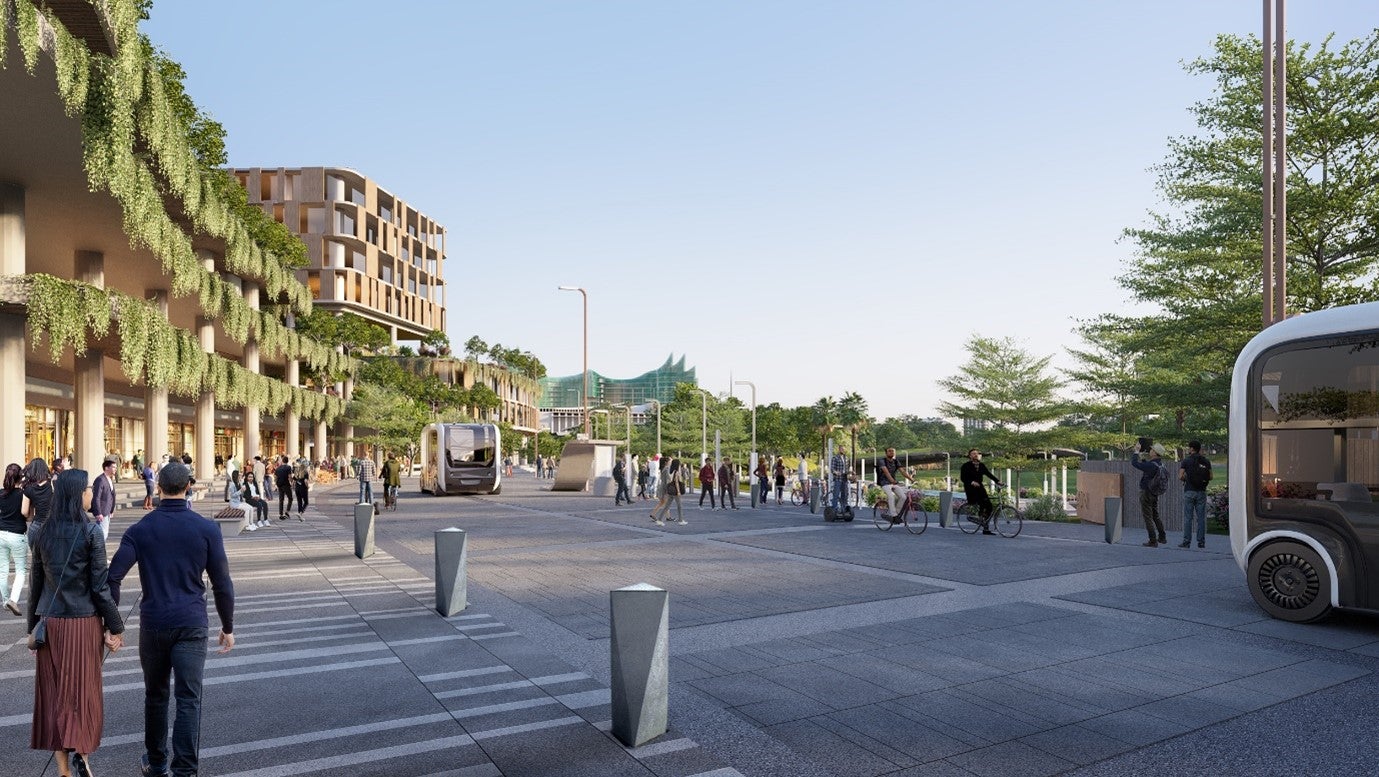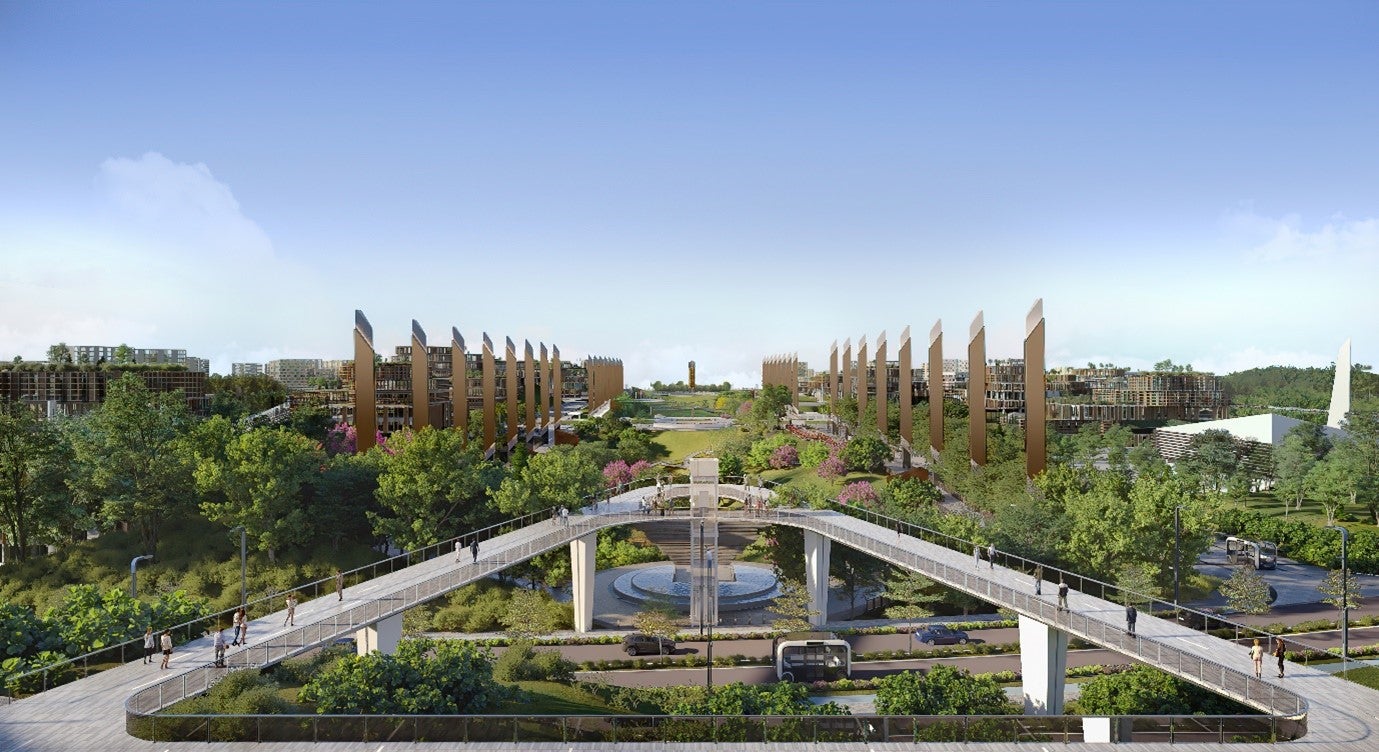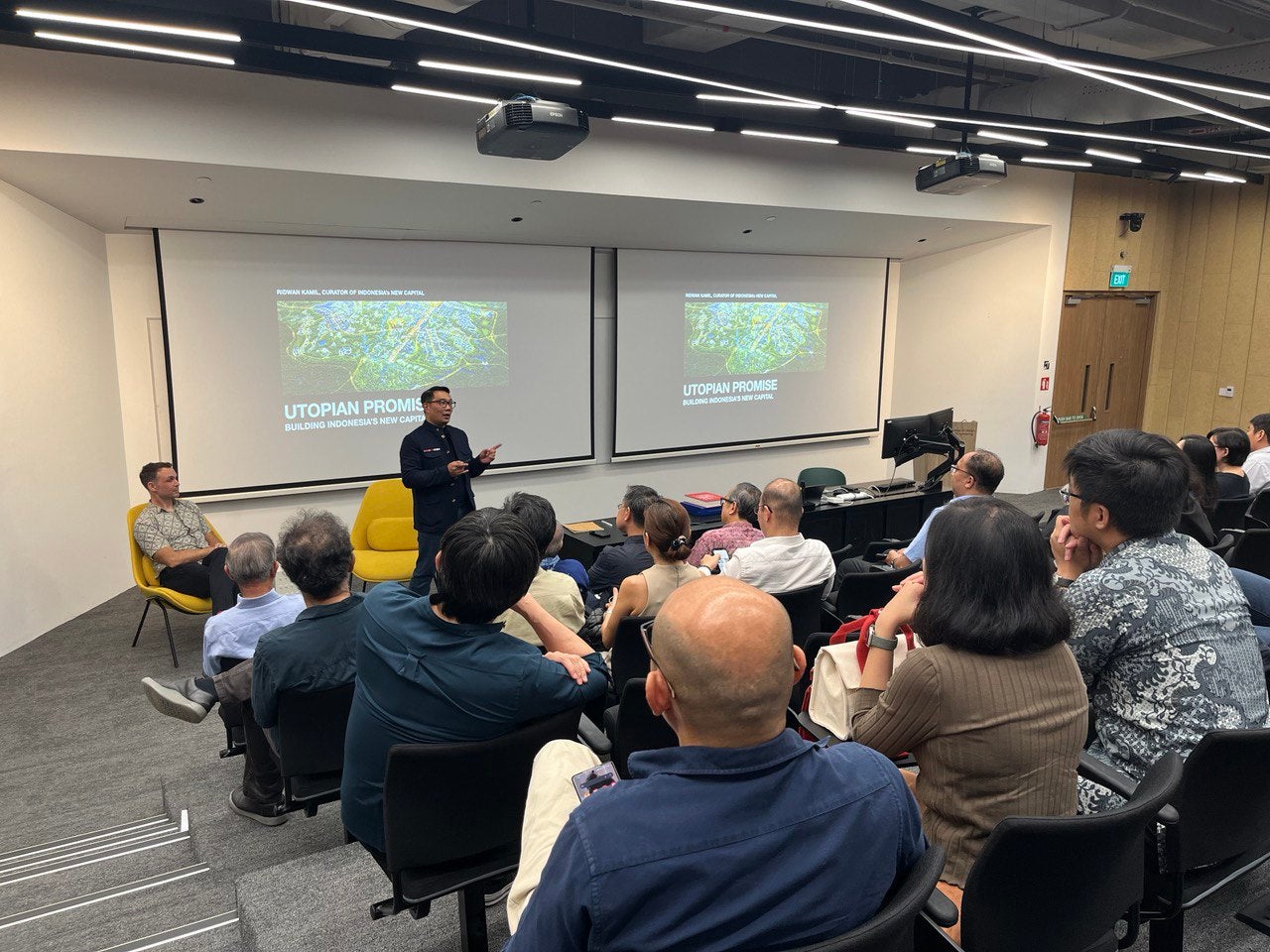Utopian promise: Indonesia's future capital city
On 20 May 2024, Ridwan Kamil, Curator of the new capital of Indonesia, Nusantara, gave a lecture at College of Design and Engineering, NUS, under the auspices of the NUS Department of Architecture and NUS Cities. He spoke on his vision for the new city, and what can be expected of Nusantara in the years to come. Here are key takeaways from his lecture, on the five revolutions envisaged for the city.

Ridwan Kamil,
Curator of Nusantara, was Governor of West Java (2018-23) and Mayor of Bandung (2013-18). He is a co-founder of the architectural firm URBANE.
The future Indonesian capital of Nusantara has been making headlines lately, and is the source of both much optimism and uncertainty. In his lecture at NUS, Mr Ridwan Kamil, Curator of Nusantara, spoke about the hopes and challenges faced by the new capital city.
The vision for Nusantara is being defined by five revolutions:
- Bringing nature into harmony with the city,
- Having forms of mobility that are friendly to the environment,
- Being a representation of Indonesia’s diversity of cultures,
- Creating new ways of living, and
- Facilitating new ways of working.
1. Planting a ‘forest city’
Efforts are being made to ‘rewild’ the areas inside, and around, Nusantara. They are currently filled with plantations of the eucalyptus monoculture. The development of Nusantara could provide the opportunity to renew the area’s wildlife. A diversity of plant species is being introduced, which it is hoped will, in turn, attract many kinds of animal life – insects, birds and more, that will all coexist in an ecosystem in harmony with the city.
In addition, efforts are made to hew closely to the vision of a ‘forest city’. As Curator of Nusantara, Ridwan and his team approve new proposals for the city, submitted through competitions, and then refine existing proposals to fit closely with the vision of the five revolutions of Nusantara. In trying to achieve a ‘forest city’, Ridwan and his team have made every effort to ensure that designs approved for Nusantara include greening in as many parts of its buildings as possible, by introducing greenery in terraces, as well as building facades, floors, interiors and rooftops.
It is hoped that incorporating nature into the city will not only beautify Nusantara, but also serve to deal with challenges brought about by climate change, for instance in mitigating the urban heat island effect, or in creating new water catchments that will help ensure a sustainable water supply.

2. Towards net-zero mobility
In creating and maintaining a sustainable relationship with nature, Nusantara also aims to become fully reliant on renewable sources of energy. It will set up solar farms and dams to ensure that carbon emissions from energy production are brought to net-zero.
Further aligning the city with the net-zero vision that has been set out for it, non-electric vehicles will barred from the city. Anyone who drives in to Nusantara in a non-electric vehicle will have to park outside the city, before taking the available modes of transport that will be made available. It is planned for Nusantara to be well-equipped with electric vehicles, including automated vehicles, and public transportation.

3. Being worthy of the nation’s cultural diversity
Indonesia is a country made up of more than 17,000 islands, home to a multitude of cultures and ethnicities. For a capital city meant to represent the country as a whole, Ridwan and his team consider it important that the variety of cultural expression originating from all parts of the country should also be represented in Nusantara.
For instance, the new Presidential Palace being built in the heart of the city is slated to contain different artworks representing the country’s different cultures. Architectural motifs and outdoor sculptures will also reflect the influence of a variety of ethnicities that are part of the Indonesian nation.
4. New ways of living: Affordable, walkable, safe
Ridwan and his team draw inspiration from cities like Hong Kong, whose urban design encourages walkability. In these cities, connecting walkways between buildings above ground level are commonplace, allowing for increased connectivity and convenience. Similar schemes of multi-level walking connections will be implemented in Nusantara. Nusantara also aims to be a city for all. Policies aiming to keep housing affordable here will be put in place. Housing will be developed that will be made affordable for those from the lower- to lower-middle classes, which will be priced in the range of 200 million rupiah.
With a standard minimum income in Indonesia of 5 million rupiah, many will be able to afford to buy a house in Nusantara, with a mortgage of about 16 years. Shops and eateries will also serve clientele of different classes – with high-end restaurants alongside affordable food courts. One of the guiding principles that Ridwan and his team abide by is the importance of placing retail outlets at ground level, no matter the purpose of the building. This would bring life and vibrancy to the streets, as people spend time along the streets to patronise these shops. Along the lines of urbanist Jane Jacobs’ concept of having “eyes on the street”, retail amenities at ground level also provide a form of informal security on the street – shopkeepers, customers and others help to look out for one another.

5. New ways of working: A city to also live and play in
Part of the vision for Nusantara is for a city in which flexible working arrangements and hours can be encouraged and supported. There are plans for multiple co-working spaces, even in government buildings. These spaces will be positioned close to nature, near trees and rivers, and have landscaped elements in them, to support the wellbeing of those working in these places.
Facilities for leisure and play will co-exist alongside these working spaces, to encourage a better balance between work and life. Ultimately, it is hoped that Nusantara will not just be a seat of government, but a city for the people to live, work and play. This will be a difficult task ahead.

To ensure that projects meet the vision set out for Nusantara, Ridwan and his team have organised competitions for various projects. They will be judged on whether these proposals align with the broader aims of the new capital city. Existing, ongoing projects are reviewed by the team, and developers and architects are encouraged to refine their buildings and spaces, to align with the cohesive vision for the city – such as in the addition of greenery, or the placement of retail on the ground floor.
For climate issues, computer modelling and calculations have been used to ensure that considerations such as enhancing ventilation and relieving urban heat can be anticipated and dealt with, to ensure that Nusantara is a liveable city for all.
Ridwan acknowledged the doubts and pessimism of some regarding whether Nusantara will succeed as a capital city. He recognised that it may take a decade, or even several decades, before it can be judged whether Nusantara has been successful in achieving its aims. However, he expressed that as long as he has the role of Curator, he would do his very best to encourage Nusantara’s realisation of its aims. If Nusantara is able to achieve its five revolutions, then perhaps it can be a positive example of a sustainable, liveable and resilient city of the future, a model for other cities around the world.

